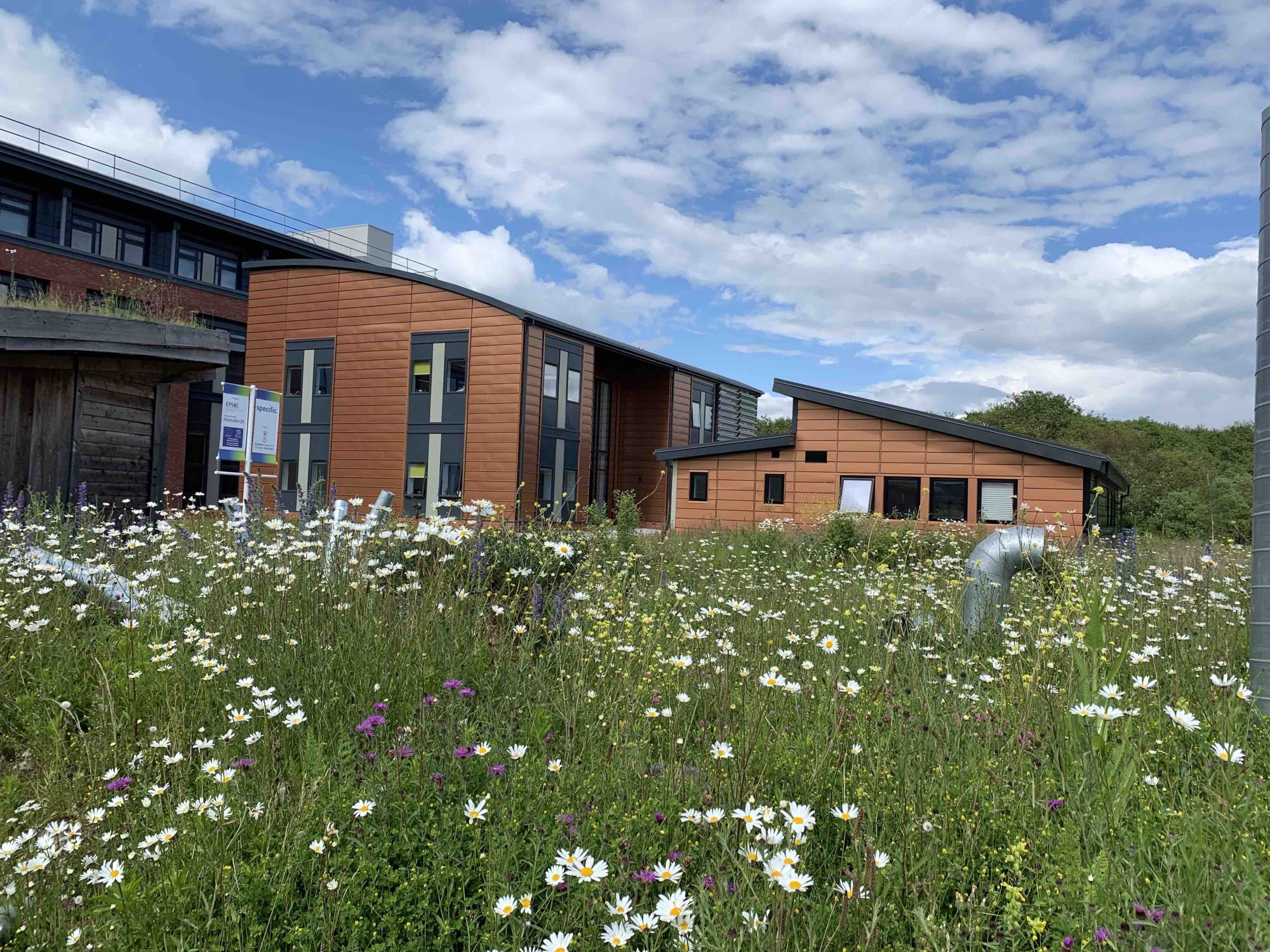SPECIFIC's Story
SPECIFIC is an Innovation and Knowledge Centre, based at Swansea University, established in 2011, initially to develop functional coatings for buildings that generate, store and release energy. These coatings formed the basis for the Active Building concept, which involves integrating renewable energy generation, energy storage, electric vehicles (EVs) and smart controls to support a decarbonised energy infrastructure. This in turn supports the UK and global targets to achieve net zero carbon emissions by 2050 or sooner.
In 2014, SPECIFIC started to construct demonstrator buildings to bring the Active Building concept to life, in collaboration with their large industrial partners (Tata Steel, NSG and AkzoNobel) and many small and medium enterprises (SMEs), all with the same focus.
As well as testing the Active Building concept, the building demonstration programme helps de-risk novel emerging technologies before they can be adopted by the wider construction industry. The risks involved in using new technologies on buildings are a huge barrier to their adoption. Hence the need for building demonstration projects like ours. One example of such a technology is a building-integrated photovoltaic (BIPV) product developed by Welsh company, BIPVCo, which was used for the first time on the Active Classroom in 2016, before it was commercially available. This provided the company with marketing material and performance data; and enabled the development of suitable installation methods; significantly assisting the product development and providing confidence to those wishing to use the product on their own building projects.
Similarly, Naked Energy, who supplied the combined solar thermal and PV (PVT) system for the Active Office, have been able to use this installation to promote their technology, gain further commissions and secure further funding to establish manufacturing facilities and expand their portfolio of low carbon products and technologies.
Since completion, our Active Buildings have continued to provide us with a mechanism to collaborate with different organisations to trial various technologies, such as smart metering devices and smart occupancy sensors; and to explore demand side response and load shifting strategies. Energy flexibility between buildings and the grid is essential if the grid is to cope with the electrification of both heat and transport, without costly upgrades.
Data monitoring is a critical element of an Active Building. Within our demonstrators the extensive data monitoring has enabled fast fault detection and remediation; optimisation of building performance; and the development of smart control strategies.
The data collected from the demonstrators has also been used to develop a Toolkit for designers and developers, which shares our learnings through case studies, design guidance and information on appropriate technologies for use on Active Building projects.
Useful Learnings from SPECIFIC
Gaining an understanding of the anticipated energy consumption of a building and the impact of factors such as building fabric; occupancy; technology choices; and installation and commissioning of building services; is essential. Identifying the performance gap and correcting and understanding the implementation challenges is crucial.
Collaboration and excellent communication are critical to the success of projects like this.
The ability to engage all parties involved in the project, especially building services engineers and contractors, early in the design process is hugely beneficial.
Never underestimate the complexity of building services and the importance of careful installation and commissioning of equipment.
We engage with a wide range of stakeholders from school children to government ministers at all stages of our project. In order to reach net zero carbon targets, it is important to bring everyone along on the journey.
Useful Learnings from SPECIFIC
Our main objective is to develop and test viable solutions to the scalable decarbonisation of heating and transport within existing market structures.
Extensive data monitoring in our buildings has enabled us to measure energy generation and consumption and to develop control strategies that maximise energy efficiency and allow the selection of the lowest carbon options for energy use at any time.







